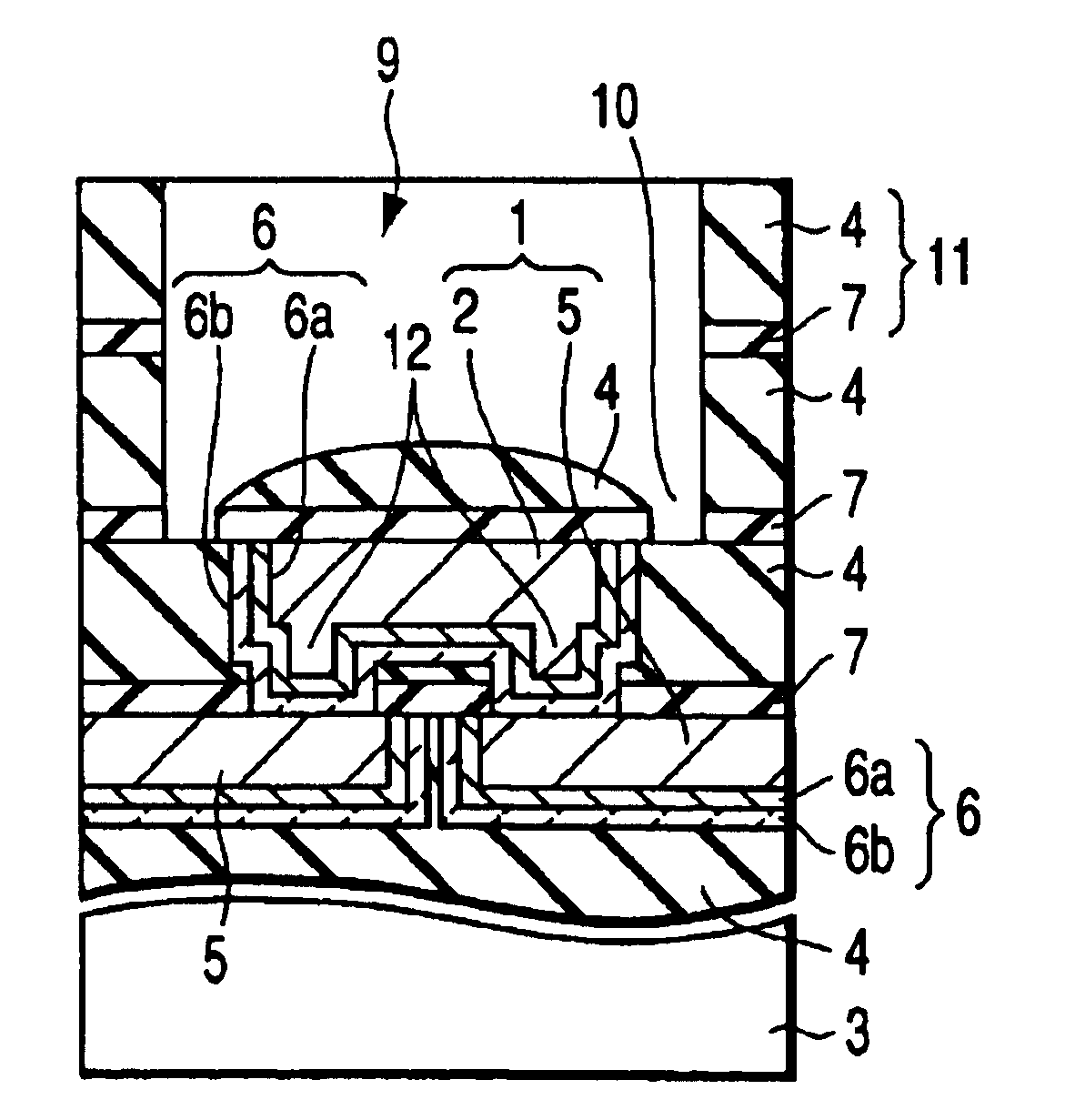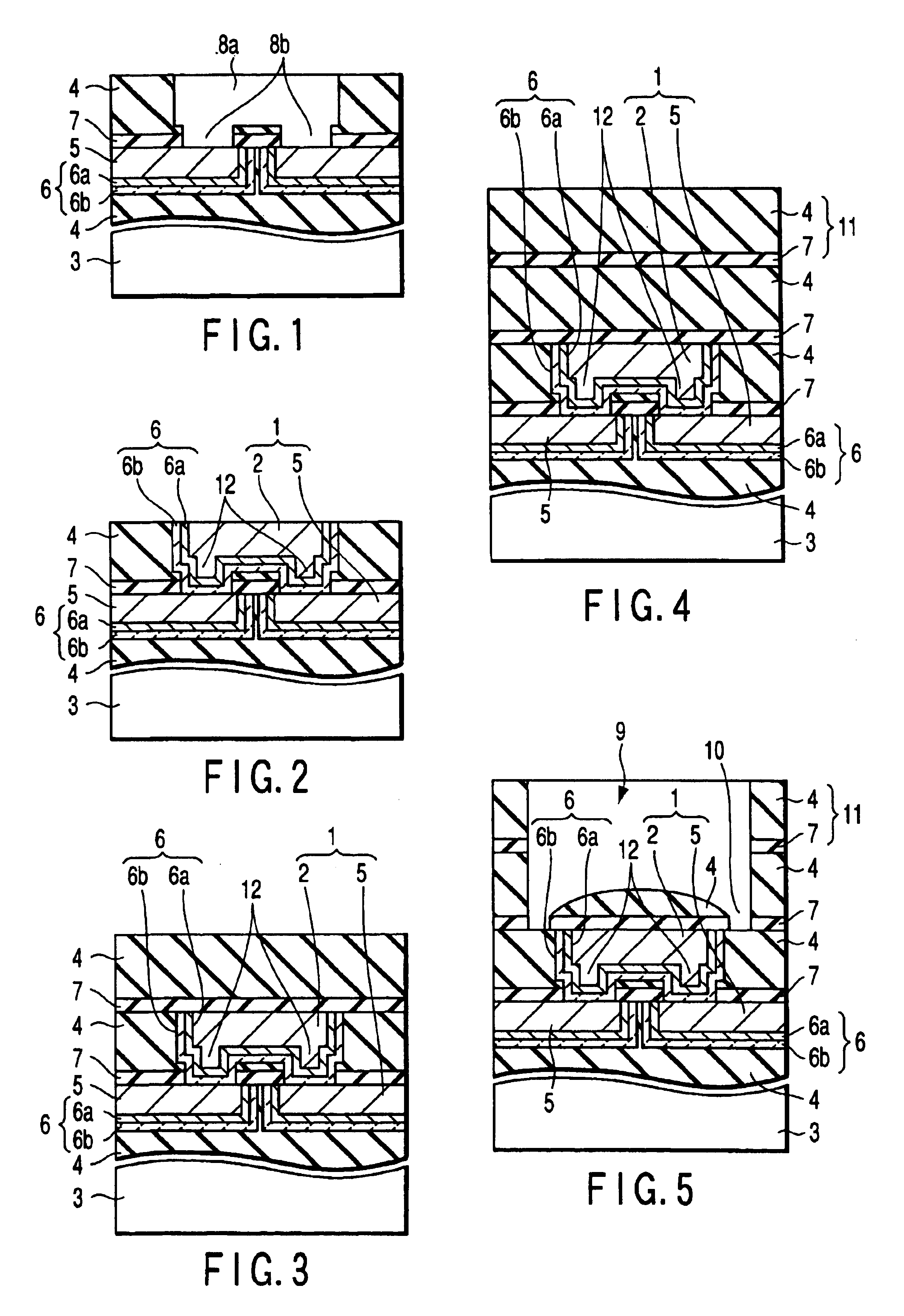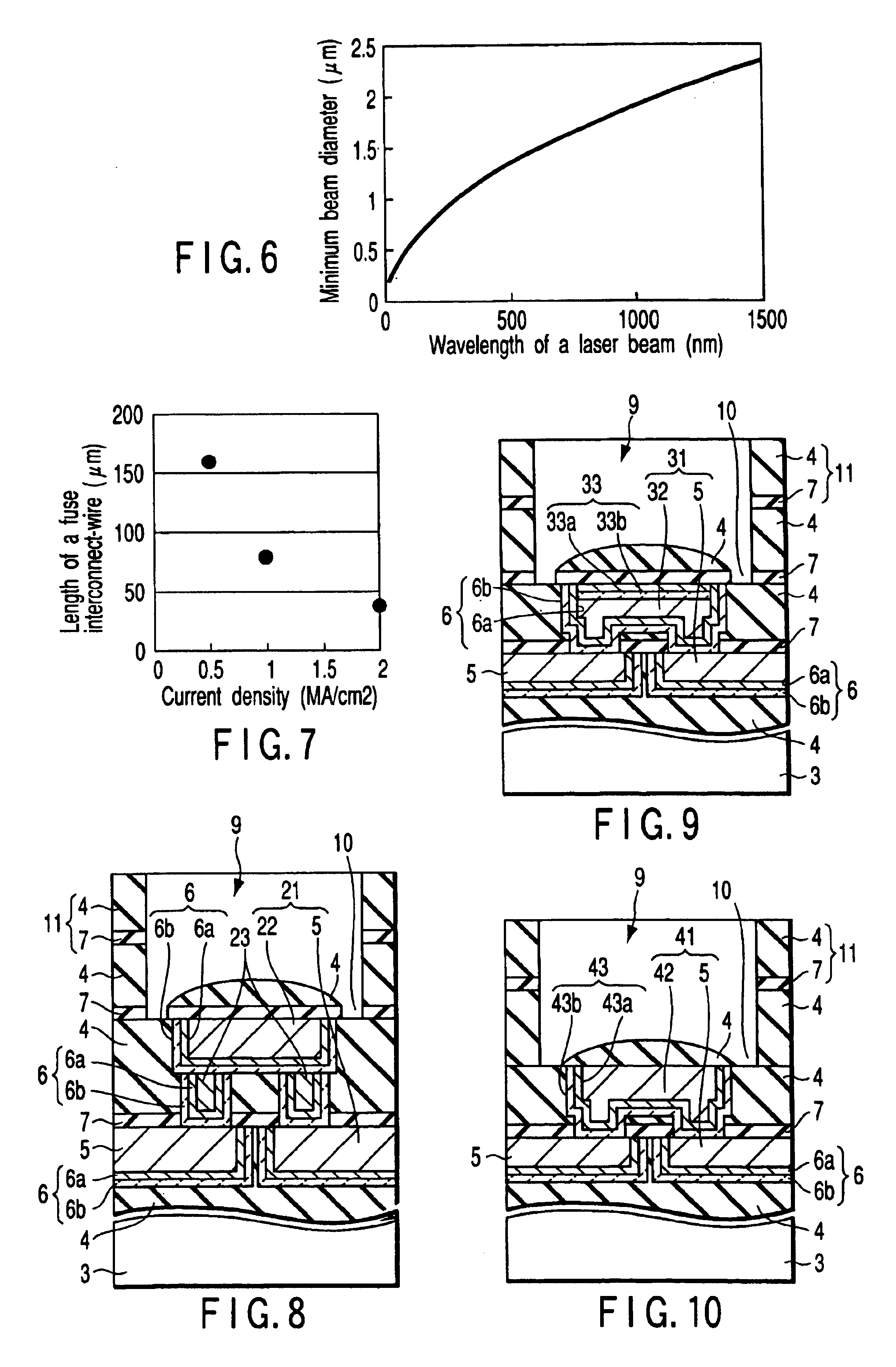Semiconductor device
a technology of semiconductor devices and interconnect wires, which is applied in the direction of semiconductor devices, semiconductor/solid-state device details, electrical apparatus, etc., can solve the problems of reducing the reliability of all fuse interconnect wires, affecting the overall quality of lsi chips, and increasing the laser beam energy
- Summary
- Abstract
- Description
- Claims
- Application Information
AI Technical Summary
Benefits of technology
Problems solved by technology
Method used
Image
Examples
first embodiment
[First Embodiment]
[0050]FIGS. 1 to 5 are sectional views of the LSI, explaining some steps of manufacturing the LSI as a semiconductor device according to the first embodiment. FIGS. 1 to 5 shows only one fuse interconnection-wire 1. Nonetheless, two or more fuse interconnection-wires may be provided. This holds true of the structures shown in FIGS. 8 to 12, which will be described later. The fuse interconnection-wire 1 is made of Cu and has a fuse main body 2 which is formed integral with a contact plug (via plug) 12. The contact plug 12 connects the main body 2 to a lead 5. Thus, the fuse main body 2 and the contact plug 12 have a so-called “dual damascene structure.”
[0051]First, as shown in FIG. 1, an Si substrate 3 has been formed with active devices (not shown) and multi-layered interconnect-wires (not shown) which make up various electronic circuits. The substrate 3 provided on top with the n-th layer (n is a positive integer) of inter-level dielectric film (ILD film) 4. The C...
second embodiment
[Second Embodiment]
[0070]FIG. 8 is a sectional view of a semiconductor device according to the second embodiment, illustrating fuse interconnect-wires and the components provided near the wires. The components identical to those shown in FIGS. 1 to 5 are designated at the same reference numerals in FIG. 8 and will not be described in detail.
[0071]The fuse interconnect-wires 21 of the second embodiment are made of Cu. As shown in the FIG. 8, the fuse main body 22 of each fuse interconnect-wire 21 is not formed integral with the contact plug (via plug) 23; it is separated from the contact plugs (via plugs) 23 are formed separately. That is, the Cu fuse main body 22 has a so-called “single damascene structure.”
[0072]Up to the formation of the m-th layer of Cu diffusion barrier film 7, the process uses the same steps as with the first embodiment.
[0073]Next, a Cu fuse main body 22 of a single damascene structure is formed in the (n+1)-st layer of inter-level dielectric film 4 provided on...
third embodiment
[Third Embodiment]
[0077]FIG. 9 is a sectional view of a semiconductor device according to the third embodiment, depicting fuse interconnect-wires and the components provided near the wires. The components identical to those shown in FIGS. 1 to 5 are designated at the same reference numerals in FIG. 9 and will not be described in detail.
[0078]In this embodiment as well, a fuse interconnect-wire 31 is formed of Cu. The fuse main body 32 of the fuse interconnect-wire 31 is formed on top with a top barrier film 33 for preventing oxidation and diffusion of Cu.
[0079]Up to the formation of the Cu fuse main body 32, the process remains unchanged from that in the first embodiment. Thus, the fuse main body 32 of this embodiment is the dual damascene structure.
[0080]After the formation of the Cu fuse main body 32, its top is selectively recessed by means of wet etching or dry etching. After that, the top barrier film (top barrier metal film) 33 is formed on the recessed portion, which is the t...
PUM
 Login to View More
Login to View More Abstract
Description
Claims
Application Information
 Login to View More
Login to View More - R&D
- Intellectual Property
- Life Sciences
- Materials
- Tech Scout
- Unparalleled Data Quality
- Higher Quality Content
- 60% Fewer Hallucinations
Browse by: Latest US Patents, China's latest patents, Technical Efficacy Thesaurus, Application Domain, Technology Topic, Popular Technical Reports.
© 2025 PatSnap. All rights reserved.Legal|Privacy policy|Modern Slavery Act Transparency Statement|Sitemap|About US| Contact US: help@patsnap.com



